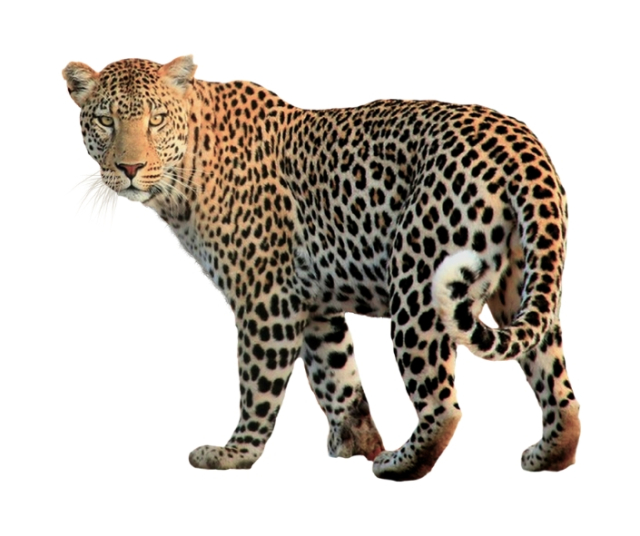On February 10, International Arabian Leopard Day is celebrated, a date that gives us the opportunity to reflect on the situation of this critically endangered species and the importance of its conservation. The Arabian leopard ( Panthera pardus nimr ), also known as the Arabian leopard, is a fascinating cat that lives in an arid and challenging region in southwest Asia. Their survival is a constant fight, and this day reminds us of the need to protect this emblematic species.
History and Distribution
The Arabian leopard is a subspecies of leopard that has adapted to living in one of the most hostile environments on the planet: the Arabian desert. Its habitat spans parts of Saudi Arabia, Oman, the United Arab Emirates and Yemen. Although once found in a variety of ecosystems, today its distribution has been significantly reduced due to habitat loss and poaching.
Characteristics of the Arabian Leopard
The Arabian leopard is a marvel of adaptation to an extremely arid environment. Some of its notable features include:
Size : Arabian leopards are smaller compared to other leopard subspecies. Adult males usually weigh around 30 to 50 kilograms, while females are smaller.
Coat : Their coat is short and thick, which allows them to withstand the extreme temperatures of the desert. It is golden or pale yellow in color with black spots, which provides camouflage in its environment.
Behavior : These leopards are solitary and nocturnal, which helps them avoid the heat of the day and hunt more effectively. They are agile predators and feed on a variety of prey, from gazelles to small rodents.
Habitat : The Arabian leopard adapts to a variety of habitats within the desert, including mountains, savannahs and wadis (dry riverbeds).
Threats to Survival
The Arabian leopard faces numerous threats that endanger its survival, including:
Habitat Loss: Human expansion, infrastructure construction and agriculture have significantly reduced the natural habitat of these leopards. As humans occupy more land, leopards have less space to live and hunt.
Poaching: Poaching is a constant threat to Arabian leopards. Their skins and bones are smuggled, and illegal hunting persists due to the demand for these products on the black market.
Conflict with Humans: Arabian leopards sometimes come into conflict with local communities, as they may attack livestock or search for prey in areas close to human habitation. This often results in persecution of leopards by villagers.
Climate Change: Climate change is also affecting this species, as it is altering rainfall patterns in the desert and reducing the availability of water and prey.
Conservation Efforts
Despite these threats, there are significant efforts underway to protect Arabian leopards and their habitat:
Conservation Reserves: Conservation reserves have been established in the countries where the Arabian leopard lives. These areas are designed to provide a safe haven for the species and allow for research and monitoring.
Education and Awareness: Public education and awareness about the importance of protecting Arabian leopards and their ecosystem is essential. Information about the biology and behavior of the species is shared with local communities to encourage peaceful coexistence.
Anti-Poaching Patrols: Riot patrol teams work to combat poaching and protect leopards from illegal hunters. These patrols are essential to guarantee the survival of the species.
Scientific Research: Scientific research is essential to better understand the needs and behavior of Arabian leopards. This helps inform conservation strategies and develop appropriate management plans.
International Arabian Leopard Day: Why It's Important
The celebration of International Arabian Leopard Day is essential for several reasons:
1. Global Awareness: This day provides a platform to raise global awareness about the critical situation of Arabian leopards and the need for their conservation.
2. Conservation Funding: The attention this species receives on its special day can boost funding for conservation projects, which is essential for its survival.
3. Resource Mobilization: By highlighting the importance of protecting the Arabian leopard, additional resources and efforts are mobilized for its conservation.
4. Change in Attitude: Public awareness can lead to a change in attitude towards the protection of wildlife and the environment in general.
How can you help
Arabian leopard conservation is a collective effort in which we can all play a role. Here are some ways you can contribute to the protection of this species:
Education : Learn more about the Arabian leopard and share that information with others. Education is essential to generate awareness.
Financial Support: Consider donating to conservation organizations working to protect this species.
Participation in Volunteering : If you have the opportunity, participate in volunteer programs in Arabian leopard conservation projects.
Responsible Consumption: Avoid purchasing wildlife products and ensure that the products you consume do not contribute to the degradation of leopard habitat.
Communication: Use social media and other platforms to spread information about the importance of protecting Arabian leopards.
The Arabian leopard is a symbol of the beauty and diversity of wildlife in the Arabian Desert, and its loss would be a tragedy. With continued conservation efforts and support from the global community, we can look forward to a future where the Arabian leopard remains a valued inhabitant of this unique environment.
